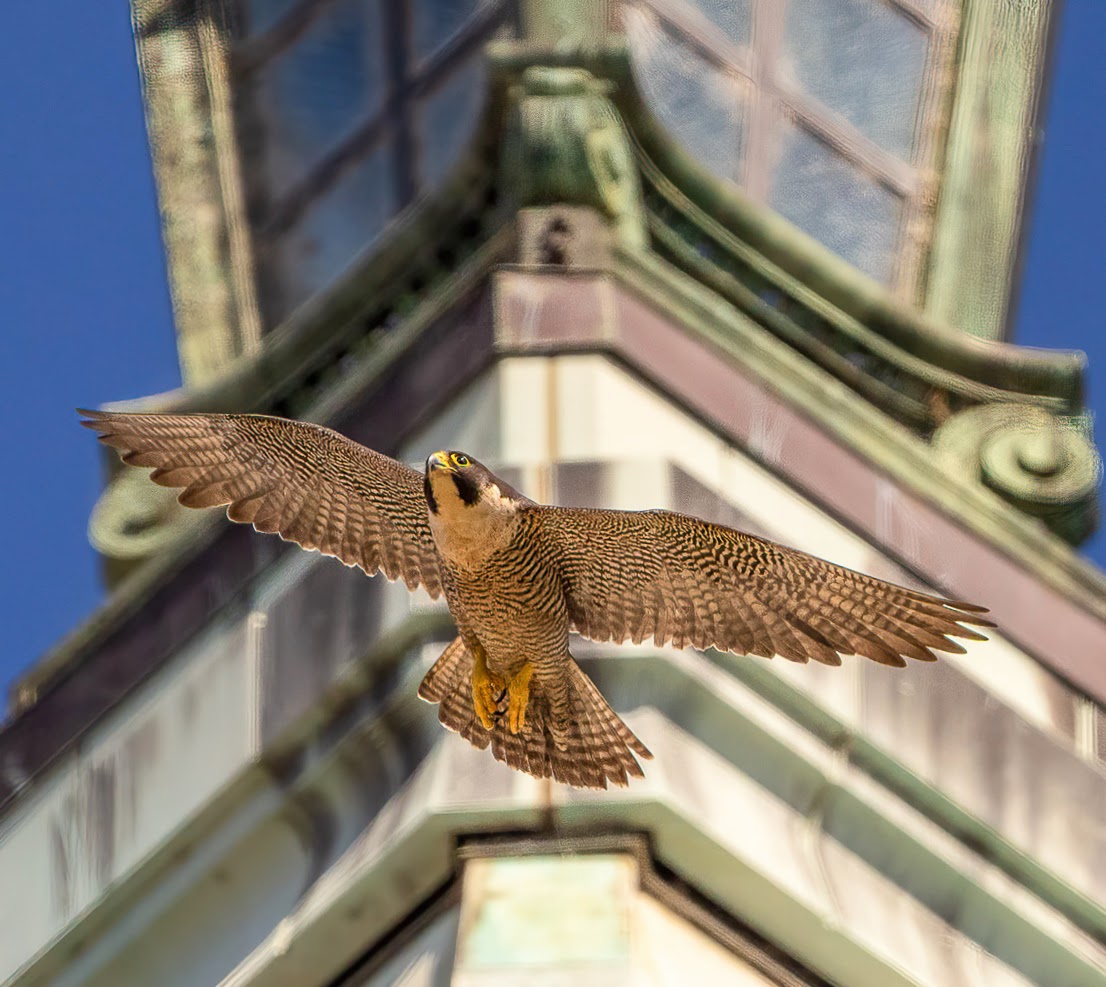
“This male at this one site was just hitting me repeatedly in the back the whole time I was banding the young in the nest,” Glucs laughs. “And … it hurt, and that was not fun! Those are probably the worst for me but it’s just an indicator that I have to do this faster.”
Glucs spends a significant amount of time banding baby birds around California, but when the UC Santa Cruz Predatory Bird Research Group first started there were virtually no young to band. In 1975, peregrine falcon numbers were so low that the group’s sole mission was to reintroduce falcons to the wild in the hopes that they would survive.
Scientists first noticed the sharp decline of birds, especially raptors, in the late 1950s. A Peregrine Conference in 1965 brought together scientists and falconers to share their surveys of precipitously falling bird populations and theories on the culprit; a bevy of research pointed at DDT. DDT, or dichlorodiphenyltrichloroethane, becomes more devastating as it goes up the food chain — birds that prey on other birds, like peregrine falcons, were absorbing extremely high concentrations of the widely-used insecticide, with devastating consequences for reproduction.
At their lowest point, there were only two breeding pairs of peregrines left in California. A second Peregrine Conference in 1969 asked the governments of Canada, Mexico and the United States to protect the birds before they vanished completely. In 1972, the newly formed Environmental Protection Agency banned DDT, and a year later, the peregrines were listed as an endangered species under the newly-minted Endangered Species Act.
While the relief was necessary and welcome, the problem was that there weren’t enough peregrines to recover.
Conservationists rallied to the peregrine’s cause. Ornithologist and UCLA alum Tom Cade founded the Peregrine Fund in 1970 in an attempt to breed them in captivity and release them into the wild. Its success was no sure thing — only a few falconers in recorded history had been able to breed them in the United States, and some of those records were disputed. Cade started his efforts in the Northeast, but the birds were virtually wiped out everywhere, so no one team could do the job. The UC Santa Cruz Predatory Bird Research Group was formed in 1975 to do that work in the West.
Early on, falcon scientists noticed that peregrines had evolved a mechanism that could help with the recovery process.
“Peregrine falcons do something really cool called double or even triple-clutching,” Glucs explains. “So if you remove eggs early enough in the breeding season, they’re going to go ahead and lay a replacement clutch of eggs. Our group took advantage of that by removing those eggs, artificially incubating them, and then having them lay another clutch of eggs so we could get double the reproductive value from that pair. We only had a few pairs left to work with, so it was really important to create a high quantity of chicks.”
UC Santa Cruz became a peregrine egg factory, incubating and hatching, incubating and hatching on campus. It also became a study in nature versus nurture in animal behavior. Some chicks were fostered by peregrines or prairie falcons. But others, given the lack of parents to go around, were raised in nests where they were fed by peregrine puppets. Eventually, once they grew big enough to hunt on their own, scientists moved them to release sites, and the birds learned to fly and hunt by themselves. “That was very successful,” Glucs adds. “Obviously there’s a huge genetic component to learning how to be a wild peregrine.”
Peregrines were delisted from the federal and state endangered species lists in 2006, after their rebound found them dispersing across the country, often to places they’d never been seen nesting before — urban environments. As it turns out, California’s long, populous coast is perfect for them.


